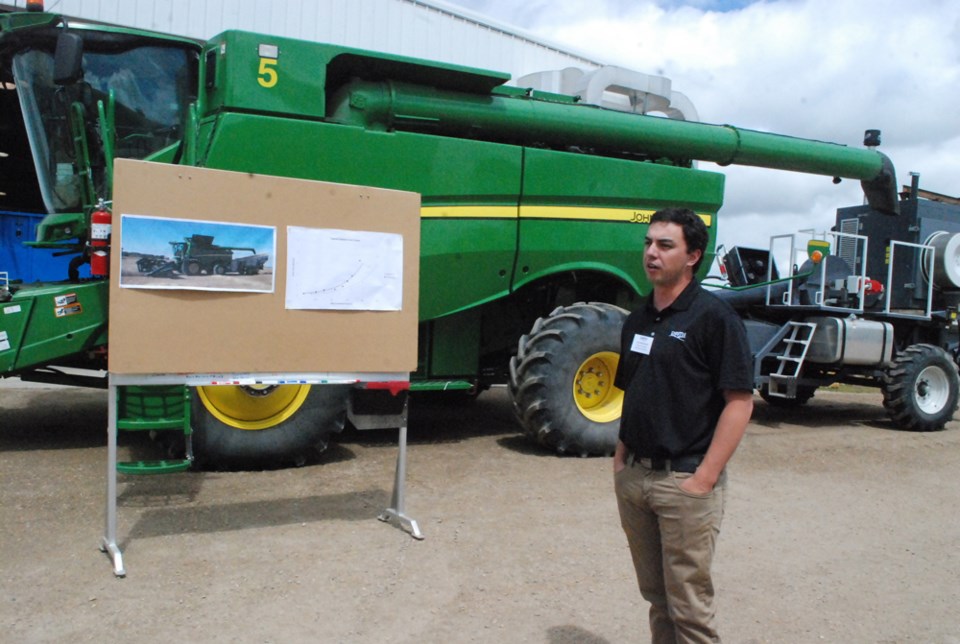It has been a relationship that has been going strong for 25 years.
And Prairie Agricultural Machinery Institute (PAMI) and SaskCanola, along with producers within the canola industry, met to celebrate those years with a tour of their Humboldt PAMI research facility on June 16.
In those 25 years PAMI President and CEO Dave Gullacher has seen projects right from seeding to storage with SaskCanola from machinery projects to agronomy.
If there was a project to be done it was a matter of discussing the problem, finding funding, and moving forward to improve all aspects of canola production.
“It’s been just a very good relationship.”
Yields, equipment, and operations have all changed over the past 25 years. A Canola Council of Canada report in March 2017 stated that the canola has a $12.2 billion impact on the Saskatchewan economy and 92,000 jobs can be traced back to canola production and processing in Saskatchewan.
Canola itself has gone through its own changes, says Gullacher.
“There’s just been an explosion in variety of traits, oil content has probably gone up not quite double what it would be in that time...far more acreage is in canola than it was in those days.”
The industry itself is also adapting to these changes with the canola community taking it upon themselves to organize, and is taxing themselves to provide funding for improvements to their products, and Gullacher says that those producers need to be commended for that.
Janice Tranberg, Executive Director, SaskCanola, says that research is a large part of their budget and PAMI’s work on machinery efficiency in the world of canola is an important part of that.
“”Projects like straight cutting and how do we properly store the seed, all of those things are very important and those are the kinds of research projects that we will continue to work with PAMI on.”
The canola industry does have a new production goal, as discussed by the Canola Council of Canada last year, with producers trying to reach 52 bushels an acre by 2025 to keep up with production demands.
Tranberg says it will not take one magic bullet to reach that goal but there will take many pieces to reach that goal if we have not already.
“Certainly genetics, storage, making sure we got the fertility practices, making sure we know the right seed depth and the seed spacing, making sure we’re reducing our harvest losses. It’s going to take all of those pieces to come together.”
Looking ahead to the next 25 years, Tranberg says the biggest challenge going forward is to get vital information out to the producers and finding the best ways to get those research results back into their hands for them to use on their operations.
“Everybody is using somewhat different systems and what works in one area might not quite work in another. That’s going to be the biggest thing going forward.”



